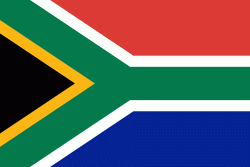University of the Witwatersrand (University of the Witwatersrand)
The University of the Witwatersrand, Johannesburg, is a multi-campus South African public research university situated in the northern areas of central Johannesburg. It is more commonly known as Wits University or Wits. The university has its roots in the mining industry, as do Johannesburg and the Witwatersrand in general. Founded in 1896 as the South African School of Mines in Kimberley, it is the third oldest South African university in continuous operation.
The university has an enrolment of 40,259 students as of 2018, of which approximately 20 percent live on campus in the university's 17 residences. 63 percent of the university's total enrolment is for undergraduate study, with 35 percent being postgraduate and the remaining 2 percent being Occasional Students.
The 2017 Academic Ranking of World Universities (ARWU) places Wits University, with its overall score, as the highest ranked university in Africa. Wits was ranked as the top university in South Africa in the Center for World University Rankings (CWUR) in 2016. According to the CWUR rankings, Wits occupies this ranking position since 2014.
The university has an enrolment of 40,259 students as of 2018, of which approximately 20 percent live on campus in the university's 17 residences. 63 percent of the university's total enrolment is for undergraduate study, with 35 percent being postgraduate and the remaining 2 percent being Occasional Students.
The 2017 Academic Ranking of World Universities (ARWU) places Wits University, with its overall score, as the highest ranked university in Africa. Wits was ranked as the top university in South Africa in the Center for World University Rankings (CWUR) in 2016. According to the CWUR rankings, Wits occupies this ranking position since 2014.
Map - University of the Witwatersrand (University of the Witwatersrand)
Map
Country - South_Africa
 |
 |
| Flag of South Africa | |
About 80% of the population are Black South Africans. The remaining population consists of Africa's largest communities of European (White South Africans), Asian (Indian South Africans and Chinese South Africans), and multiracial (Coloured South Africans) ancestry. South Africa is a multiethnic society encompassing a wide variety of cultures, languages, and religions. Its pluralistic makeup is reflected in the constitution's recognition of 11 official languages, the fourth-highest number in the world. According to the 2011 census, the two most spoken first languages are Zulu (22.7%) and Xhosa (16.0%). The two next ones are of European origin: Afrikaans (13.5%) developed from Dutch and serves as the first language of most Coloured and White South Africans; English (9.6%) reflects the legacy of British colonialism and is commonly used in public and commercial life.
Currency / Language
| ISO | Currency | Symbol | Significant figures |
|---|---|---|---|
| ZAR | South African rand | Rs | 2 |
| ISO | Language |
|---|---|
| AF | Afrikaans language |
| EN | English language |
| ST | Sotho language |
| SS | Swati language |
| TS | Tsonga language |
| TN | Tswana language |
| VE | Venda language |
| XH | Xhosa language |
| ZU | Zulu language |















